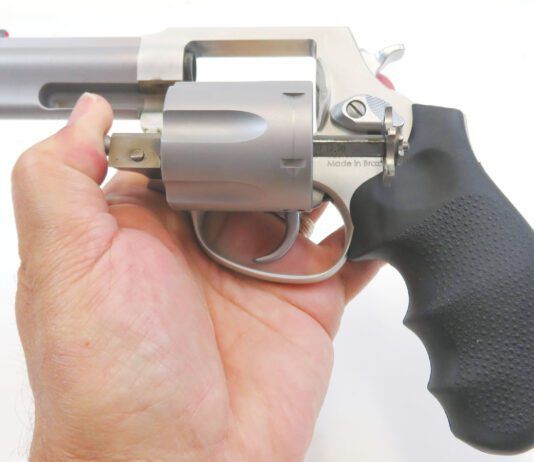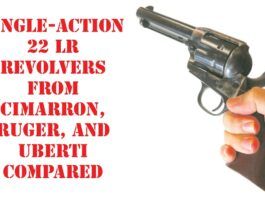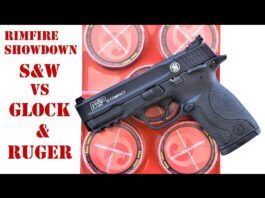50-Cals Under Attack in NJ
…Last week, the New Jersey Assembly Judiciary Committee approved legislation that would ban the purchase, transfer, and inheritance of many popular hunting guns, historical American firearms, and large-bore target firearms
Smith & Wesson Shooters Win With New and Old Guns
GunReports.com has learned that the S&W’s M&P9 Pro Series pistol was used in its first competitive win at the 2008 Texas State International Defensive Pistol Association (IDPA) Championship.
Push for Electronic 4473 Form
The National Shooting Sports Foundation has begun urging ATF to adopt an electronic Form 4473 ('E-4473') that would be voluntary for both consumers and dealers
Preview: Pushback on Open Carry
As the mini-movement of open carry gains steam, handgun owners who might consider carrying their handguns openly can expect to hear a lot of hooey about how open carry will ruin the world, as the following shows.
Gun Control Group Braces for Court Loss—Let’s Hope They’re Right
With the Supreme Court poised to hand down a potentially landmark decision in the case, the Brady Campaign to Prevent Gun Violence fully expects to lose.
Taurus’ Specialty Grips For Its 1911
New for 2008 Taurus is pleased to offer its popular 1911 with “Bull’s Head Walnut” grips.
Laserlyte’s Next Generation Railed Lasers
Cottonwood, Ariz. - LaserLyte is proud to introduce the new Sub-compact Laser Sight Version Two (V2), the smallest and most versatile railed laser yet
Nikon Encore Scope
Nikon is proud to introduce the all-new Encore handgun scope for 2008.
NSGA: U.S. Hunting & Firearms Sales Increase in 2007
In equipment categories with sales of more than $1 billion in 2007, the greatest percentage growth in this category came from air guns, which showed a 15% increase to $283.7 million.
NRA Wins and Loses in Pennsylvania Court
A Pennsylvania court sided with NRA and issued a permanent restraining order against two of the city of Philadelphia’s municipal gun control measures enacted in April.
A Step in the Right Direction for Wisconsin’s Right-to-Carry Movement
…On Thursday June 5, Attorney General J.B. Van Hollen issued Concealed Carry Permit #1 for a retired investigator. Van Hollen said he hoped other agencies would follow his lead. He said he has told them they have the authority to issue such permits under a four-year-old federal law that makes some of the thousands of retired Wisconsin officers able to carry a concealed weapon.
Surprise Move by Georgia Gun Dealer Vs. NYC
A Georgia gun dealer facing a lawsuit by New York City Mayor Michael Bloomberg decided not to participate in jury selection, which sends the case directly to a federal appeals court and out of U.S. District Judge Jack B. Weinstein’s court.






























